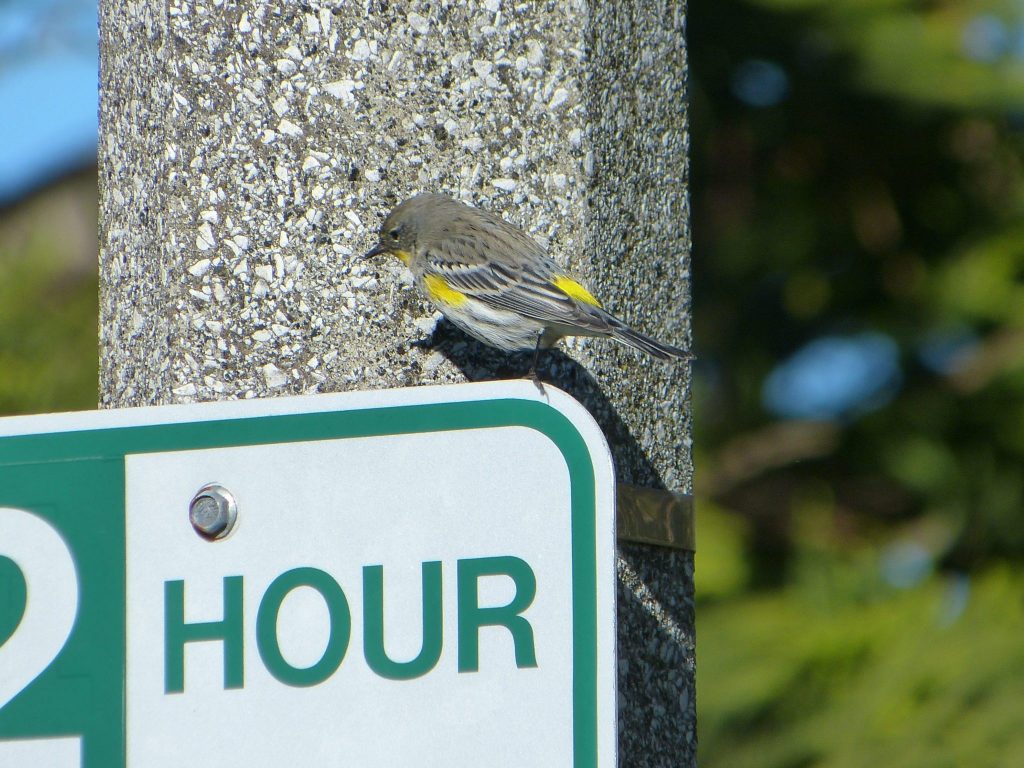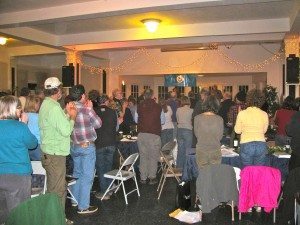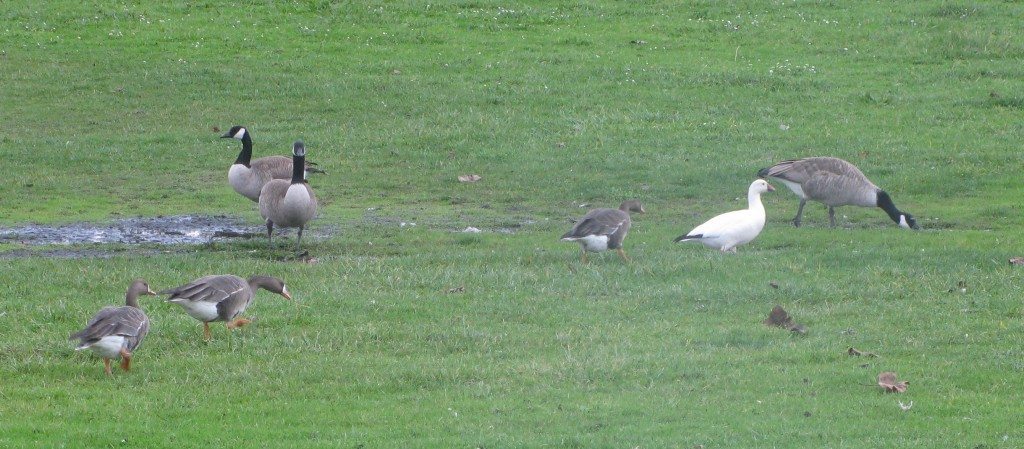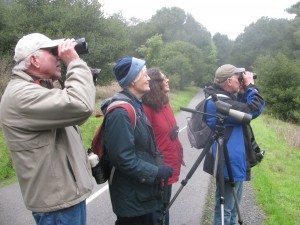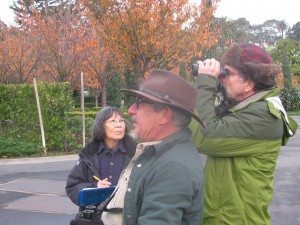SF Christmas Bird Count sets record
By Ilana DeBare
What a glorious day for a count! It started out cool and windy, especially for the teams by the ocean, but by midday the sun was strong and hats came off.
And best of all… we set a new record for the San Francisco Christmas Bird Count.
Eighteen teams counted a preliminary total of 179 species — breaking the prior SF CBC record of 177 species and surpassing this year’s Oakland CBC total of 177. (Not that San Franciscans are competitive, of course — not in the slightest.)
“It was a remarkable day. I’m anxious to see the total numbers we ended up with,” said CBC co-compiler Dan Murphy, who together with co-compiler Alan Hopkins will now collect and tally final numbers.
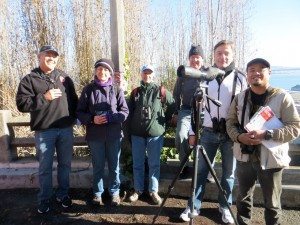 North Beach CBC team on Telegraph Hill / Photo by Carlo Arreglo
North Beach CBC team on Telegraph Hill / Photo by Carlo Arreglo
Some preliminary findings from the count, as reported at the festive CBC dinner at the Log Cabin in the Presidio:
- The only remaining California Quail found in the 15-mile-wide San Francisco count circle were at the Pacifica archery range.
- Two Clapper Rails were found at Heron’s Head Park.
- The team covering eastern Golden Gate Park set a new record of 70 species in its territory and had a “seven warbler day.”
- The Sunset team counted 1,900 Red-throated Loons along the beach!
- The Lake Merced team counted 40 rarities from six species that are not usually found in San Francisco, including Tree Swallows, White-throated Swifts, Great-tailed Grackles and a Tropical Kingbird.
- The McLaren Park team – one of the teams with a particular challenge since their territory was landlocked, without water birds – found 55 species including four woodpecker species.
- The Presidio team encountered some 3,000 gulls at a massive herring run at the end of the day.
- The team with the highest count for the day was the Candlestick area team with a whopping 113 species, edging out the Presidio which had 104.
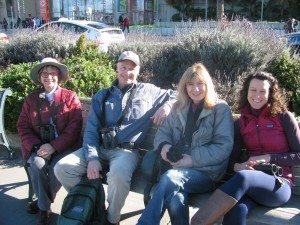 Lunch break for the eastern Golden Gate Park team / Photo by Ilana DeBare
Lunch break for the eastern Golden Gate Park team / Photo by Ilana DeBare
Click here to see more photos of the count (both birds and birders) and the dinner afterwards on our Facebook page.



